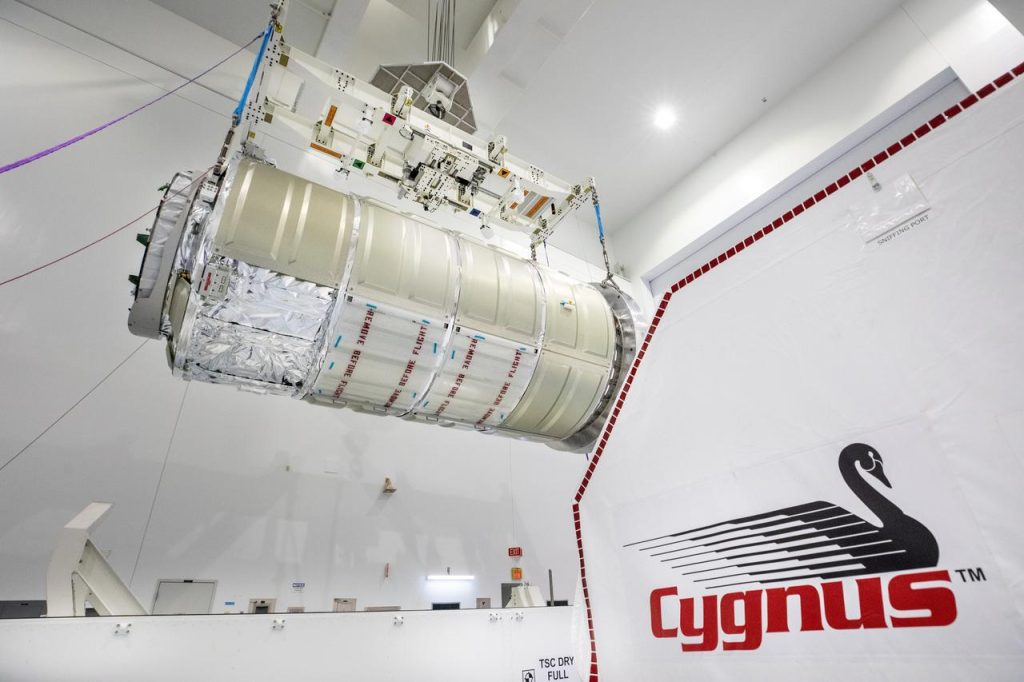
A Falcon 9 rocket lifted off at 6:11 p.m. EDT September 14 from Cape Canaveral Space Force Station carrying the first mission of Northrop Grumman’s Cygnus XL spacecraft. Designated NG-23, it is the most capable version of Cygnus to date, loaded with over 11,000 pounds of research and supplies bound for the International Space Station.
NASA confirmed the freighter is named S.S. William “Willie” C. McCool, in honor of the space shuttle Columbia pilot lost in 2003.
The new cargo profile reflects a step up in capacity. Cygnus XL is designed to haul more mass and volume than earlier variants.
The spacecraft was expected to arrive at the ISS September 17, when astronaut Jonny Kim was to operate the station’s robotic arm to capture it, with Zena Cardman assisting.
However, on September 16, NASA said the spacecraft’s main engine stopped earlier than planned during one of two burns to raise its orbit to catch up with the station. This prompted the agency and Northrop Grumman to plan a new arrival date, which has yet to be announced.
NASA said all other Cygnus systems are performing normally.

When it does arrive, and following its capture by the robotic arm by the station’s crew, ground controllers are expected to guide the arm to maneuver Cygnus into place for a slow, deliberate attachment to the Earth-facing port of the Unity module. Once secured, the spacecraft will remain until March 2026.
Among the most closely watched payloads are semiconductor crystals grown in orbit. Microgravity eliminates convection and sedimentation, conditions that typically interfere with crystal formation on Earth.
Past studies have shown crystals produced in space can be more uniform and higher in quality, and NASA notes the current experiment may inform advances in electronics and radiation-resistant devices designed for both terrestrial and space applications.
Reliable water systems are another focus. Biofilms – dense microbial colonies – commonly form inside spacecraft plumbing. NG-23 carries equipment that directs ultraviolet light through optical fibers to prevent biofilm growth without relying on chemicals.
Researchers will study how biofilm behavior shifts in microgravity and how effective the ultraviolet approach proves in those conditions. NASA points out that the results could inform next-generation life-support systems while offering insights for water treatment technologies on Earth.
The spacecraft is also delivering experiments in pharmaceutical crystal production. In microgravity, drug molecules can crystallize into larger, more ordered forms that reveal clearer structural data.
According to NASA, samples grown during the mission will be returned for ground-based study to determine whether these improved crystals can guide the development of therapies for cardiovascular disease, neurological disorders, and cancer.
Exploration beyond Earth orbit hinges on efficient propellant storage, and NG-23 carries a cryogenic fuel management demonstration. Engineers are testing the use of noncondensable buffer gases to stabilize tank pressure in microgravity, a potential solution to reduce boil-off losses. NASA highlights this as a key step in enabling long-duration missions that will require reliable cryogenic fuel transfer and storage far from Earth.
NASA lists additional studies across biotechnology, physical sciences, and Earth and space science as part of the NG-23 cargo manifest. The agency underscores that the International Space Station continues to serve as a proving ground where technologies critical for lunar and Mars exploration can be developed while also delivering applications for life on Earth.
When the mission ends in March 2026, Cygnus will be unberthed by the robotic arm and set free. The spacecraft will drift slowly away from the station, fire its engines to lower orbit, and re-enter Earth’s atmosphere for a destructive breakup. From the ground, nothing will be visible but streaks of light as the freighter and its load of trash break apart harmlessly over the Pacific Ocean.
FTC: We use income earning auto affiliate links. More.




Comments